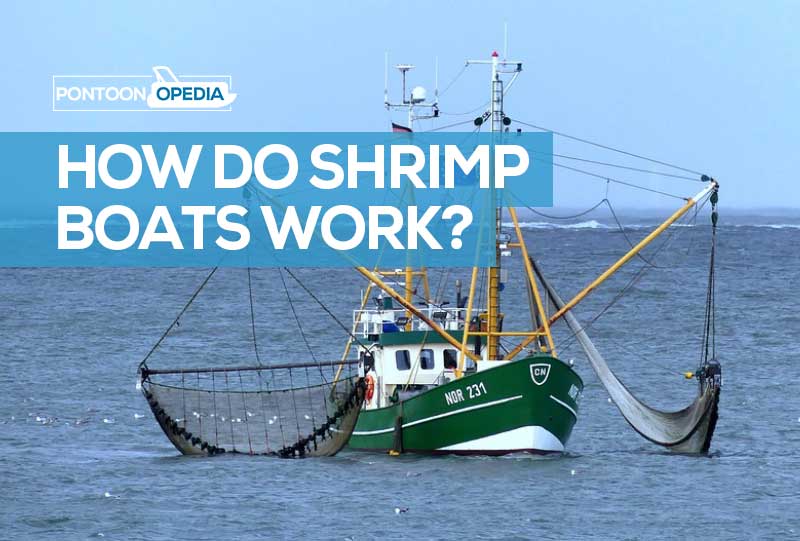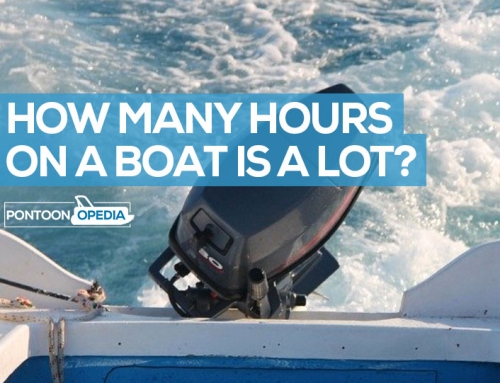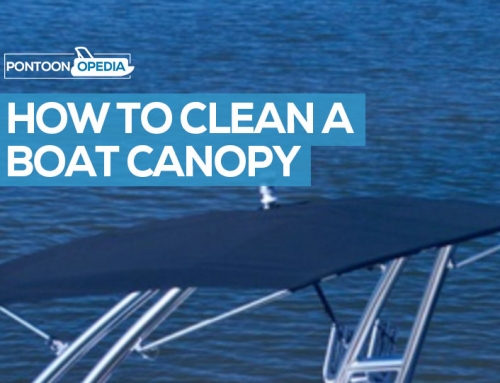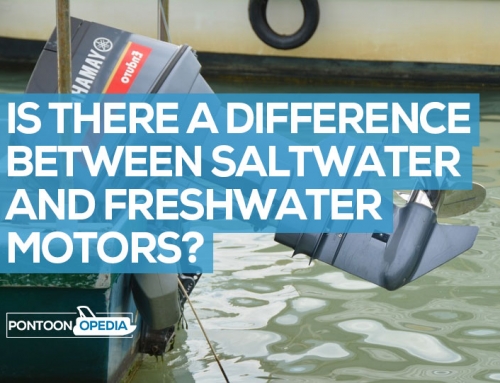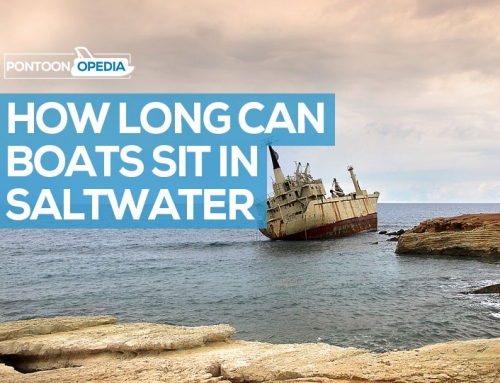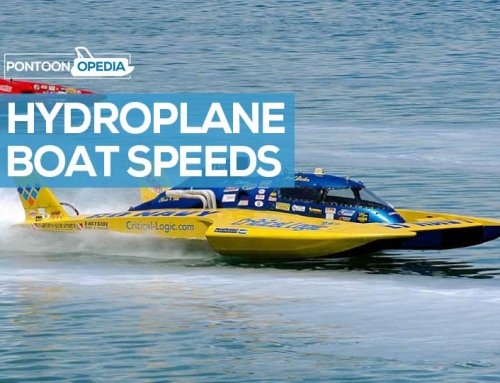According to press reports from last year, the shrimp market was estimated at $45 billion around the world. It should grow 5.2 percent between 2019 and 2024. While Thailand and China produce more shrimp than the United States, if you’ve decided to get in on shrimping, you need a shrimp boat. What are these boats and how do they work?
How do shrimp boats work? Shrimp boats are vessels, often outrigger trawlers, used for catching shrimp. They have outriggers at the boat’s mast where trawls can attach. They also include an aft or superstructure forward. Capstans and warp winches get positioned on the deck to bring in the shrimp.
In this article, I am going to elaborate more on shrimp boats, including how they work, details on the nets, and how many pounds of shrimp they catch. I will even talk about downsides. You’re not going to want to miss it, so keep reading!
Table of Contents
What is a shrimp boat?
A shrimp boat, as the name might tell you, is a boat made primarily for shrimping. As I explained in the intro, these boats typically go by the name trawlers. Many trawler types exist, such as naval, purse, wet fish, freezer, stern, side, pair, otter, beam, and outrigger trawlers.
If an outrigger trawler has an aft working deck and a forward superstructure, then it’s ideal for catching shrimp. An oversized net gets cast down from the boat. The net may drag all the way to the water’s floor or linger midway through the water depending on where the most shrimp are located.
Besides just shrimp, it’s possible to rake in prawns like this as well as fish species such as cod, sole, flounder, and skate. You’re more likely to catch these fish by positioning the net towards the floor rather than in the middle of the water.
How do shrimp boats work?
Now that you know a bit more about what a shrimp boat is, let’s talk about how they work to catch shrimp, shall we?
The outrigger trawler is named such because it has an outrigger. What is that, you ask? It’s a boat structure that protrudes from the rest of the vessel. An outrigger also goes by the name boom to some boaters.
How do shrimp boat nets work?
The outrigger on the boat will pull along the net or trawl. Knowing that, it makes sense to call these boats outrigger trawlers, right? Okay, so we have to talk about the trawl more, because it’s not just your average net. It’s more like a sock that lies flat. It has side doors that keep the front open so shrimp, prawns, and bottom-feeding fish can get into the net.
The net has a limited reach, in that it can only grab the creatures right in front of it. Even if you drag the net or trawl to the bottom of the water’s floor, it may linger just above the surface. This is referred to as flying.
A shrimp boat’s outrigger can also attach to the mast foot as an alternative placement. Then you can add an otter trawl or even up to two trawls on both sides if you so choose. As we mentioned in the intro, the aft, also known as the superstructure forward, is part of the design of these boats as well.
To complete the setup, shrimp boats will have warp winches. Each winch features its own capstan, a type of machine that rotates on a vertical axis. The capstan allows for various people onboard the boat to tug hawsers, cables, ropes, or nets back onto the deck.
Are there any negatives to using shrimp boats?
As we’ve noted, shrimp boats or outrigger trawlers are by far one of the most popular means used for catching shrimp. Are there any problems with these boats that might give you pause if you were thinking of using one?
Yes, actually. The first matter has to do with bottom trawling or dragging your net at the sea floor. Even though you might not move at a speedy pace, the force of the net scraping along the floor can ruin sponges, corals, and other structures that call the seafloor their home.
This has echoing repercussions. Oceans and other bodies of water, just like on land, have their own ecosystems. Once you take something out of that ecosystem, the whole thing falls out of whack. Yes, that’s even if it’s one seemingly inconsequential part of the ecosystem that gets removed, such as coral.
Some ecosystems will not survive the change. Others might be better off, but there’s no way you can tell. While you might think the obvious solution here is to keep your net above the sea floor, that’s not always as easy as it seems. As the net fills up especially, it can get heavy and harder to control. It might end up unintentionally dragging.
The other downside is less of a problem but still something we wanted to discuss. That is, with an outrigger trawler, you can’t exactly control what you catch. You have a big net, you cast it, and it grabs what it grabs. Sure, you more than likely did research into the body of water before casting your net. You wanted to ensure the water had a high rate of shrimp, after all.
It very well may and you could even get a lot of shrimp for your efforts. However, anything else that’s in the water near that shrimp will also come up in your net. This may be fish, prawns, or even another species entirely.
It’s then up to you to decide what you want to do. Separating through an assortment of sea creatures to get to the shrimp can take time, but you might have no other choice. Whether you keep the other creatures, sell them, or toss them back out to sea is your choice.
Most of the time, those trawlers that drop a net in the middle of the water tend to bring in pelagic fish. Depending on where you’re trawling, those pelagic fish species can vary. For example, in the North Sea, it’s herring. If you venture out to Peru, you’ll land a lot of anchovies. On the west coast of Canada, you’ll find pollock and hake.
These fish aren’t worth much of anything, so don’t expect to turn a huge profit if you take the time to bring the fish in, retain them, and contact sellers.
How can you get started shrimping today?
If this all sounds good to you, then you may want to begin shrimping on your own. What exactly do you need to do to make that happen? Just follow these steps.
Step 1: Get a shrimp boat
It should go without saying that you will need a shrimp boat to catch shrimp. As I’ve said a few times over, outrigger trawlers work best for this purpose.
You don’t necessarily need a large boat, as it’s possible to use smaller nets to catch shrimp. You obviously get fewer shrimp per boating trip, but if you’re a one-man or two-man operation, it doesn’t make sense to use a huge outrigger.
You can see how much shrimp boats costs on average in this guide.
Step 2: Have your license
You didn’t think you could just fish the waters without a license, right? Many states insist that aspiring shrimpers show a fishing license before engaging in this activity.
The rules and use limits vary from state to state. Here are Florida’s rules, but if you live anywhere but in Florida, make sure you look up the laws in your state.
Step 3: Do your research
What bodies of water in your home state have the highest rate of shrimp? These are the ones you’ll want to gravitate towards, as you have a better chance of success compared to less-populated waters.
Step 4: Follow the rules
Besides demanding a license, states will also have rules about when you can shrimp, how much shrimp you can catch (often in gallons), and the size of net you can use.
For example, in Washington, you can catch 10 pounds of shrimp a day at the Hood Canal and the Puget Sound. Shrimping season begins in June and ends in mid-October. In Florida, your cast net when fully stretched cannot exceed 14 feet long. It also can’t have an opening that’s more than 96 inches when measuring the perimeter.
Step 5: Start shrimping
After reading the rules in your state, you can finally get to do what you’ve been looking forward to: catching shrimp! To this end, make sure you use bait balls. These are made primarily of fish bait with some clay. Put these in a shrimp pot and then dip the pot into the water.
Step 6: Filter out shrimp
As I mentioned, very rarely will you catch just shrimp. You’ll have to parse through your harvest to ensure you have mostly what you want, which in this case would be shrimp.
Step 7: Profit
Once you have your shrimp ready, you can sell them to willing buyers and bring in some money. Repeat the process from there.
The last word…
To catch shrimp in the seas, you need a shrimp boat. This also goes by the name outrigger trawler. This boat is designed for max efficiency. You use a net or trawl to cast out and bring in as many shrimp as possible, hopefully not catching too many prawns and unrelated fish as you do so.
Shrimping is a major industry, and quite a lucrative one at that. With this guide, you too can begin harvesting your own shrimp. Good luck!

